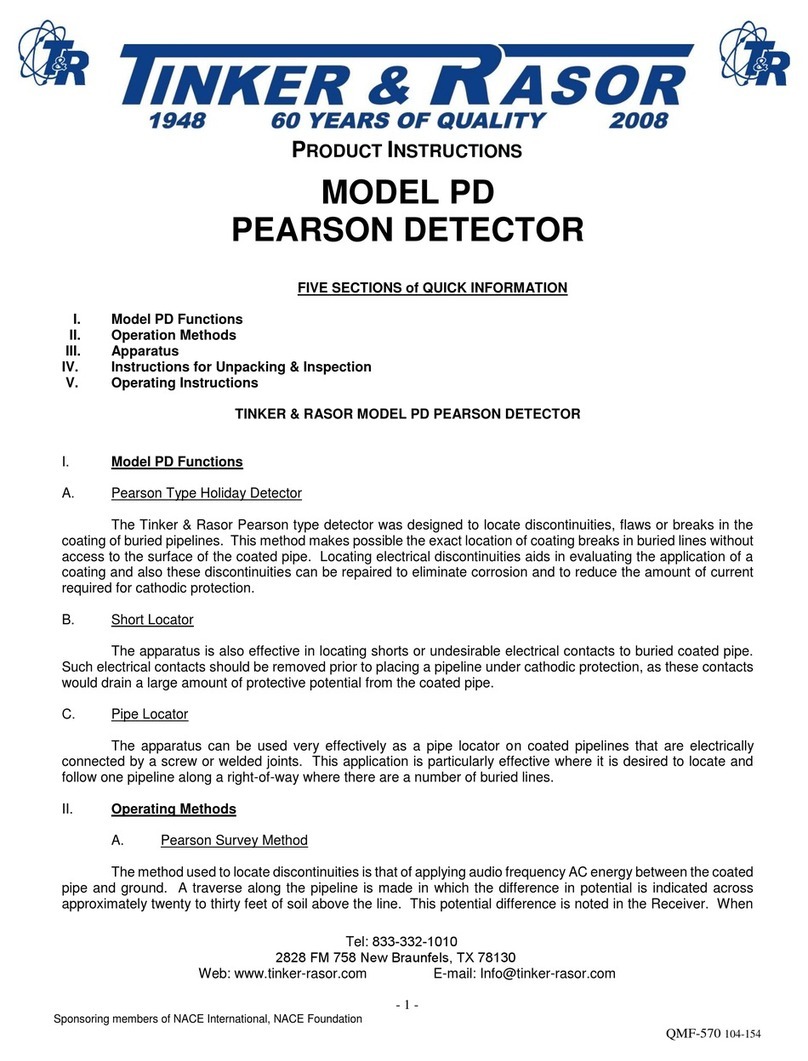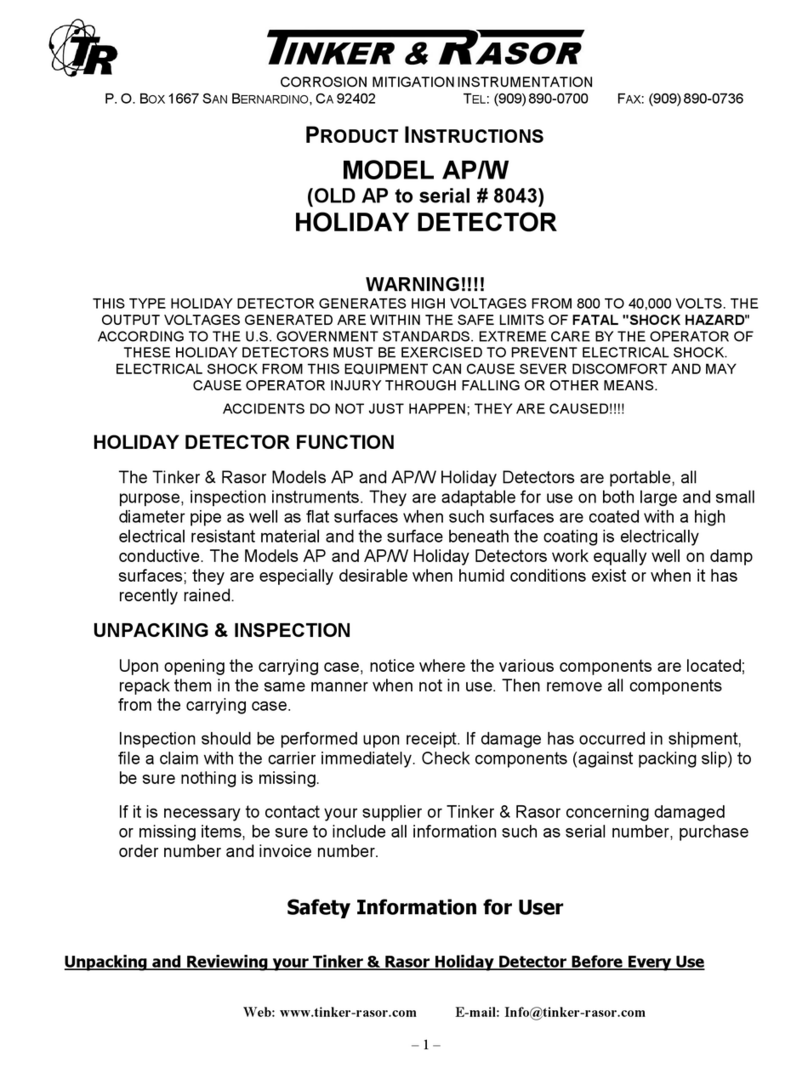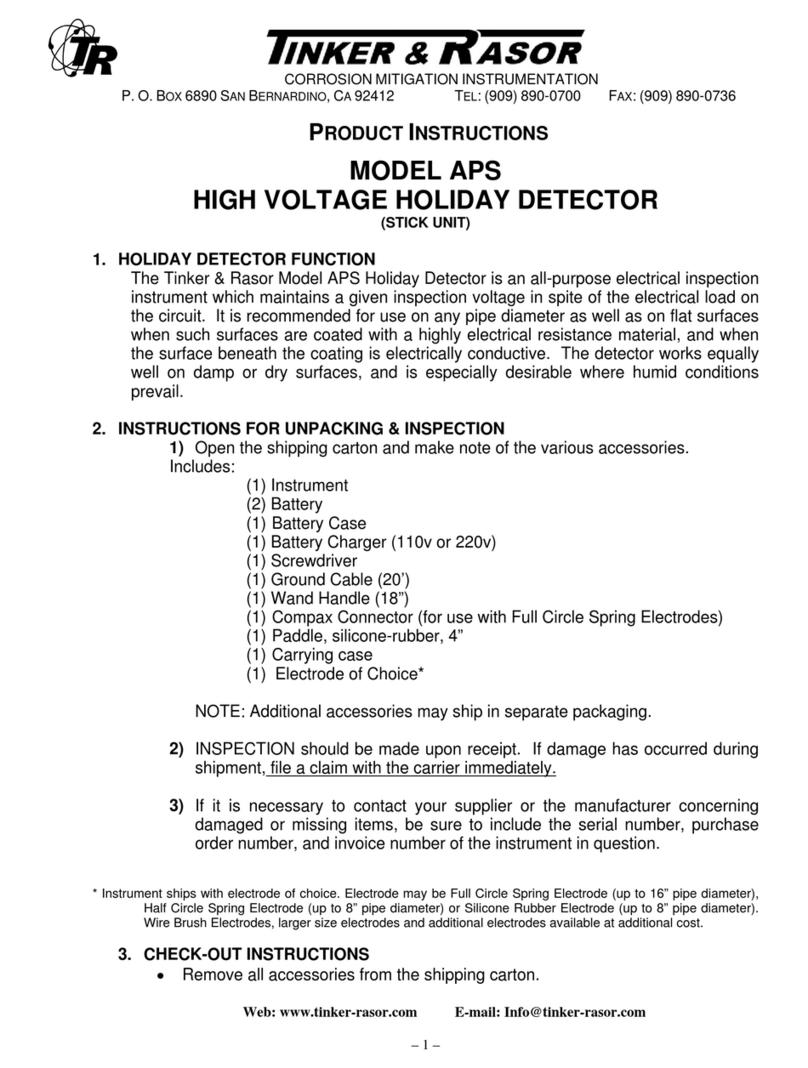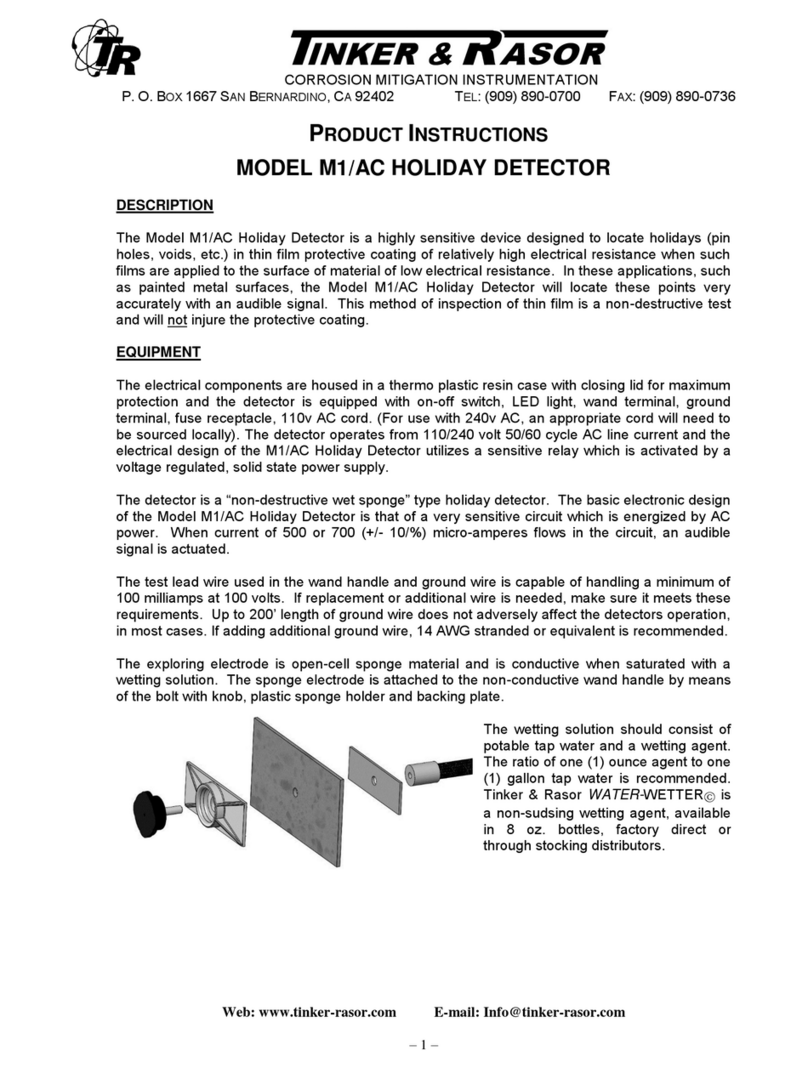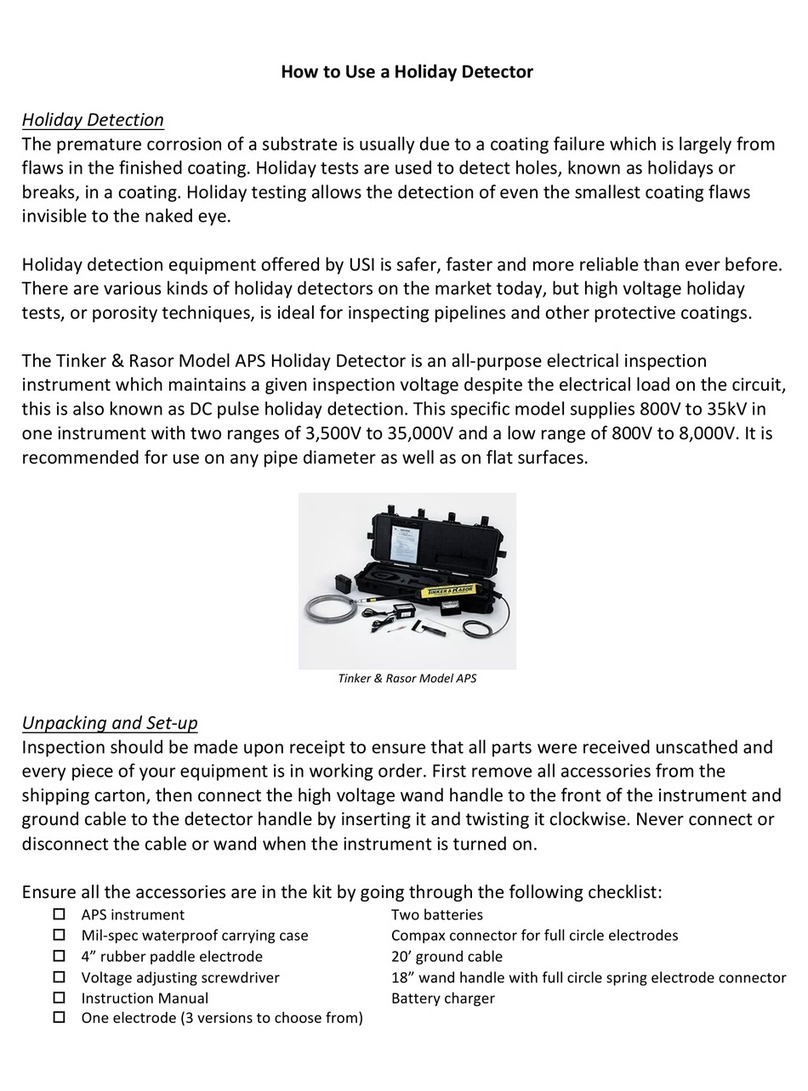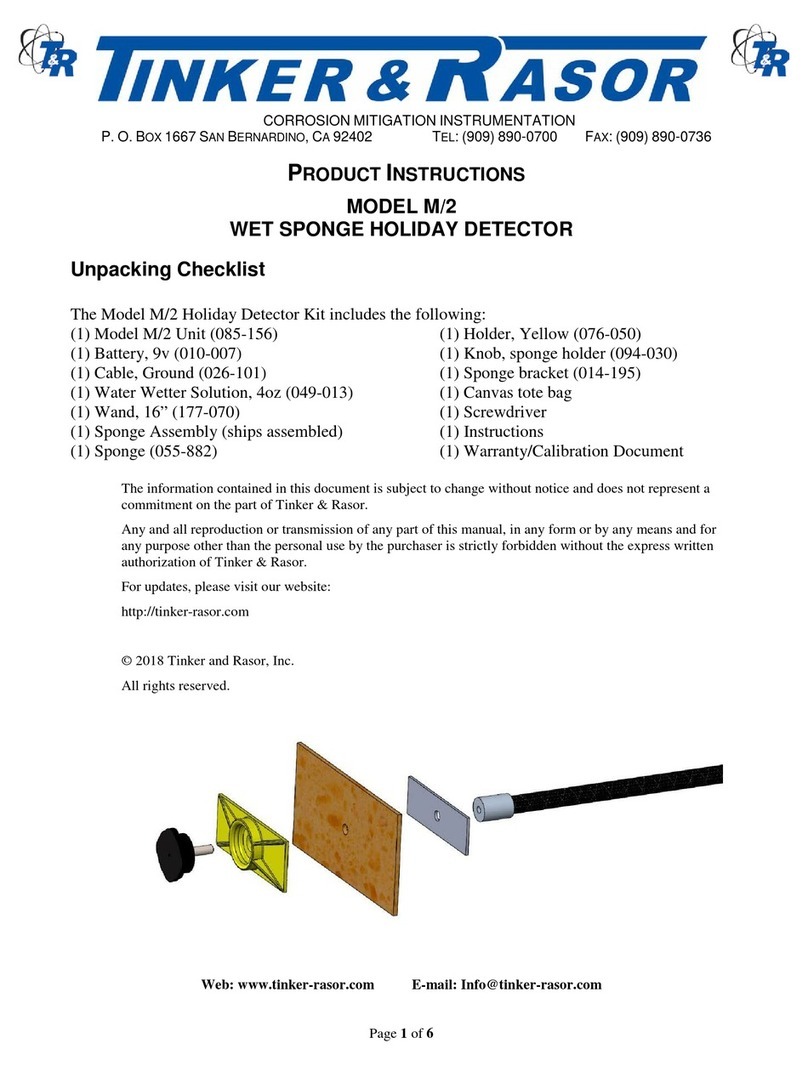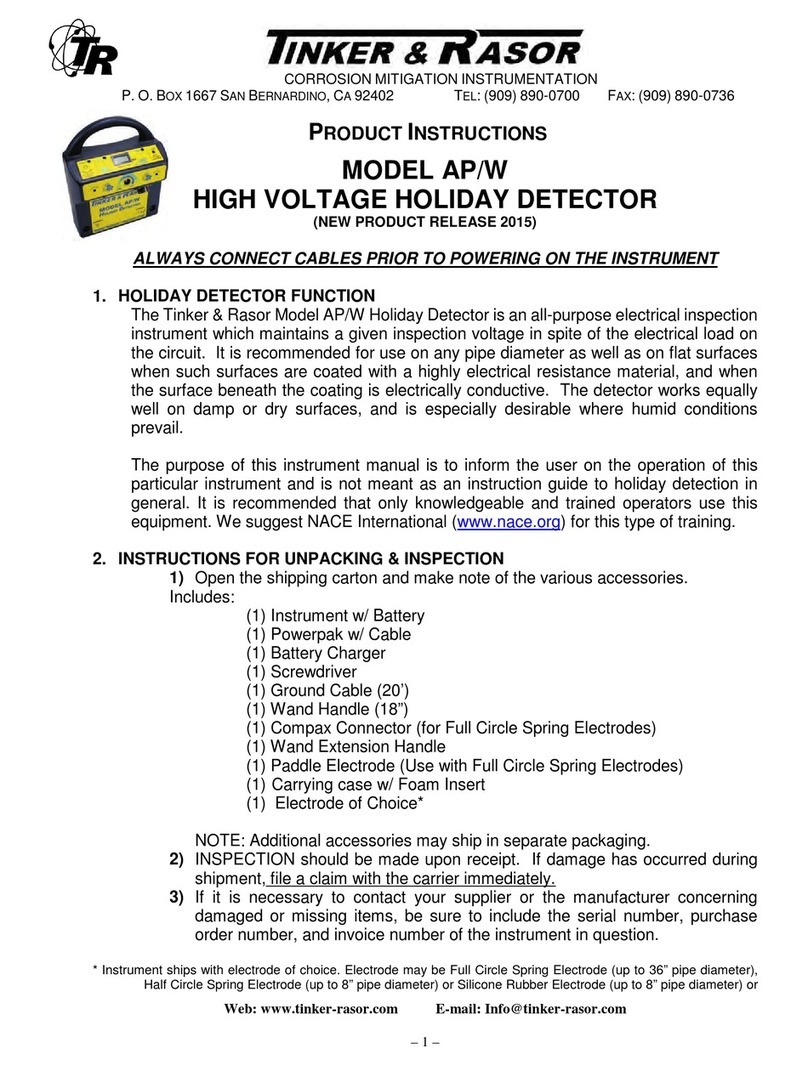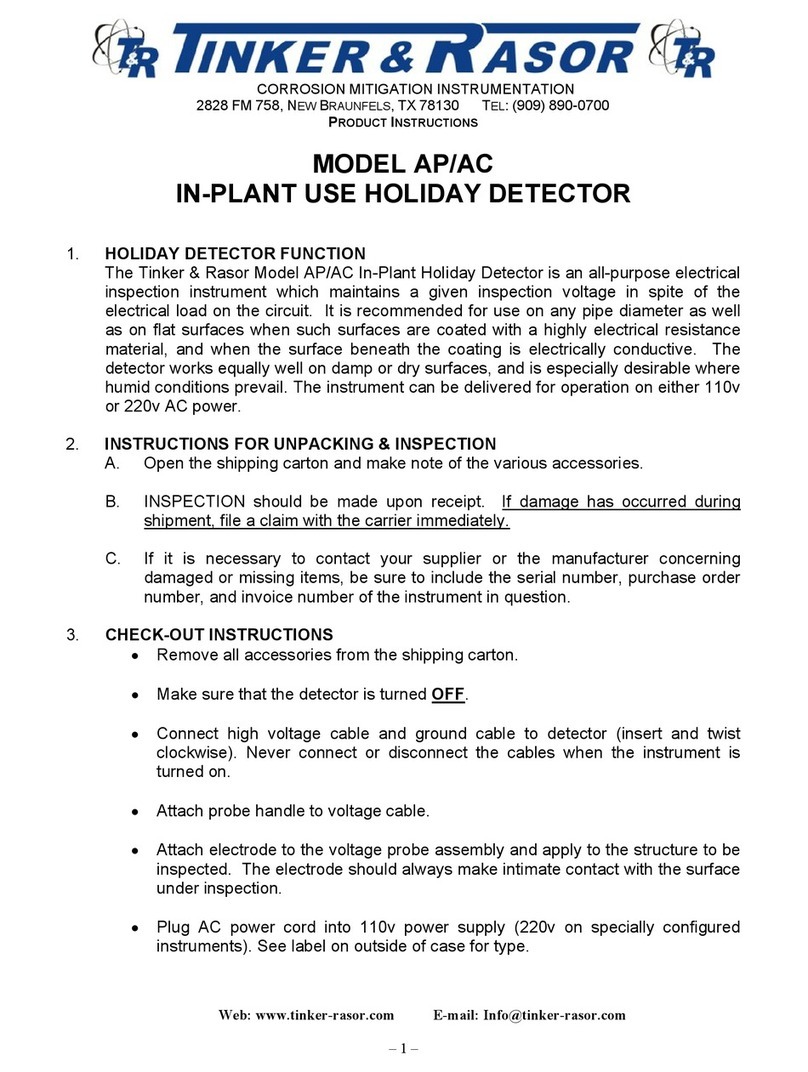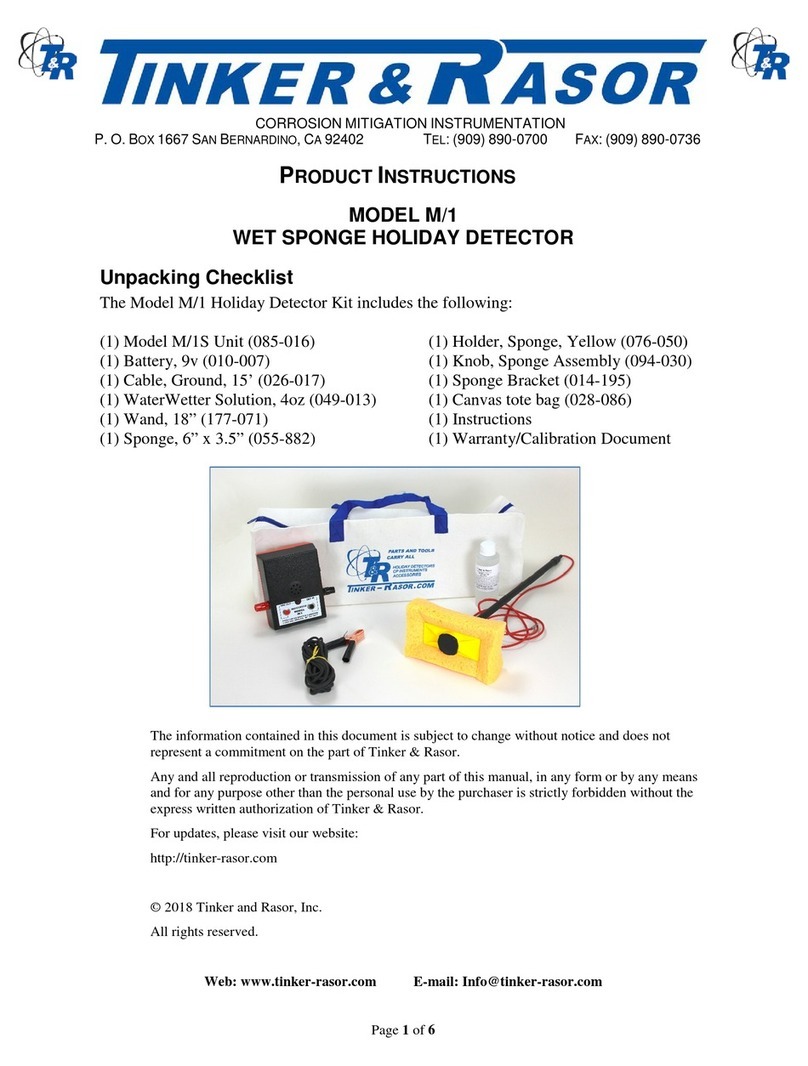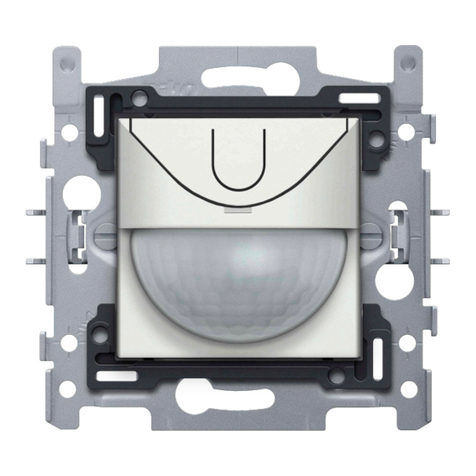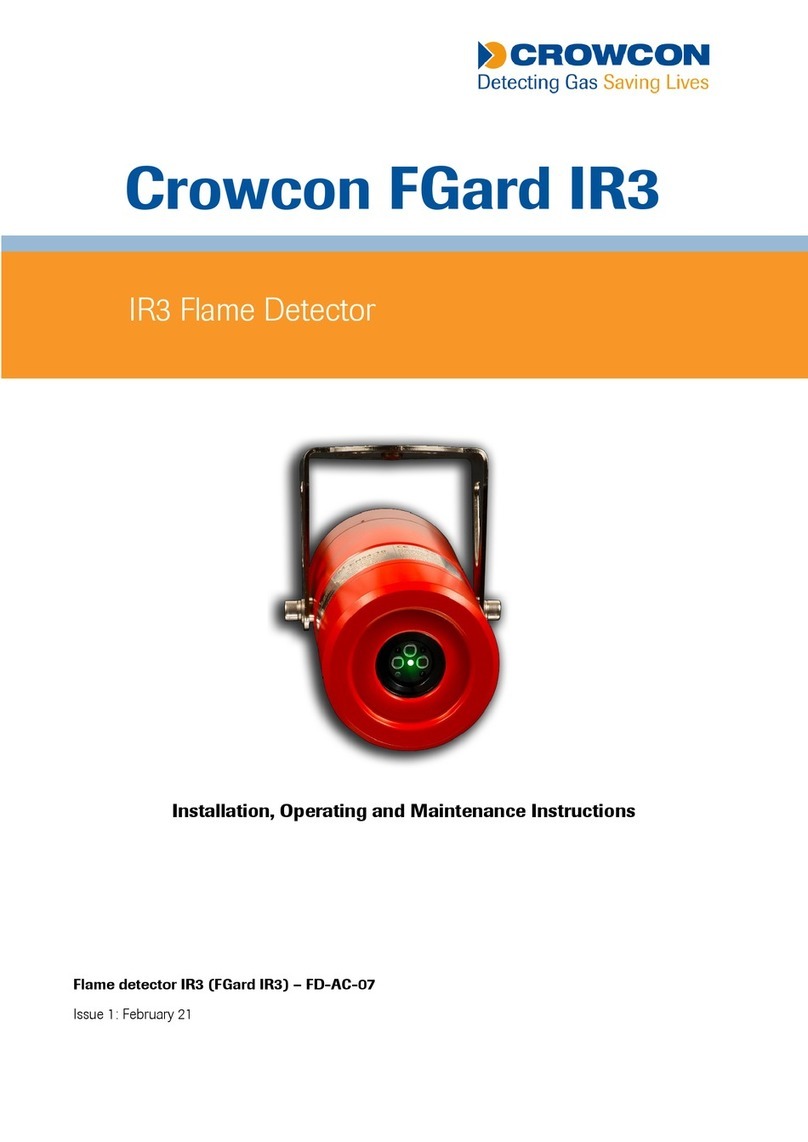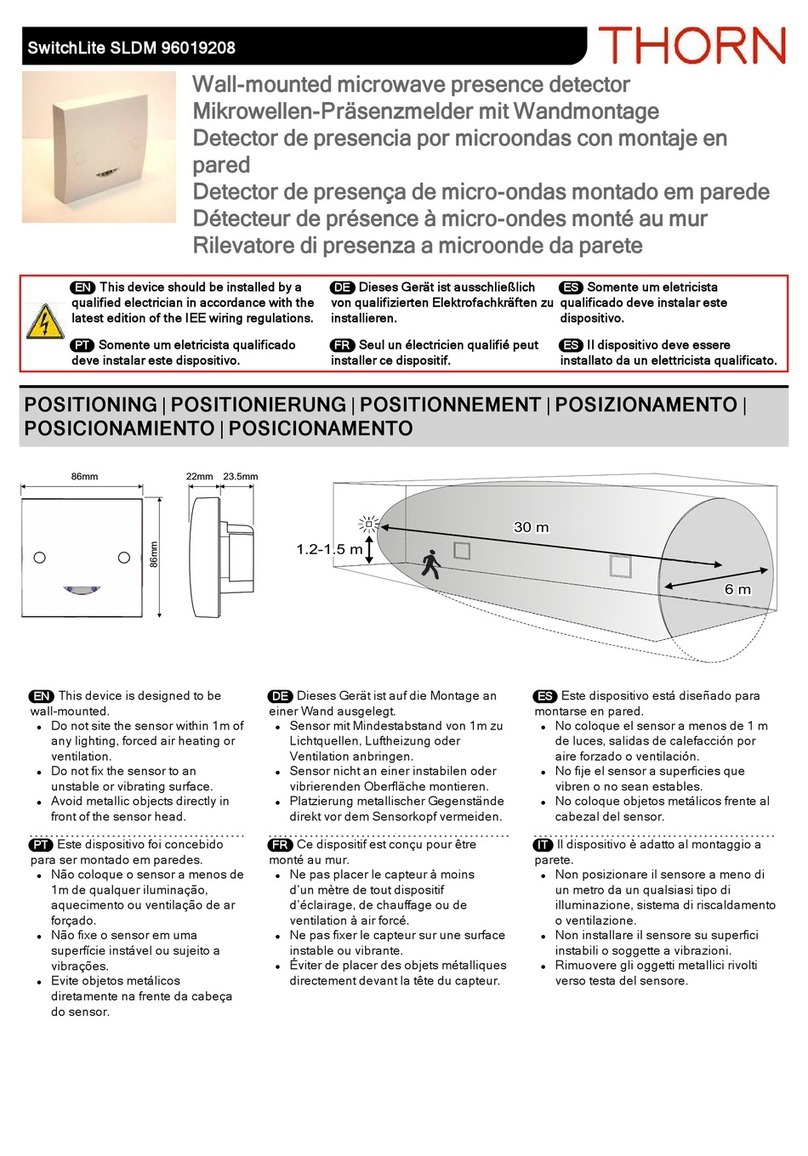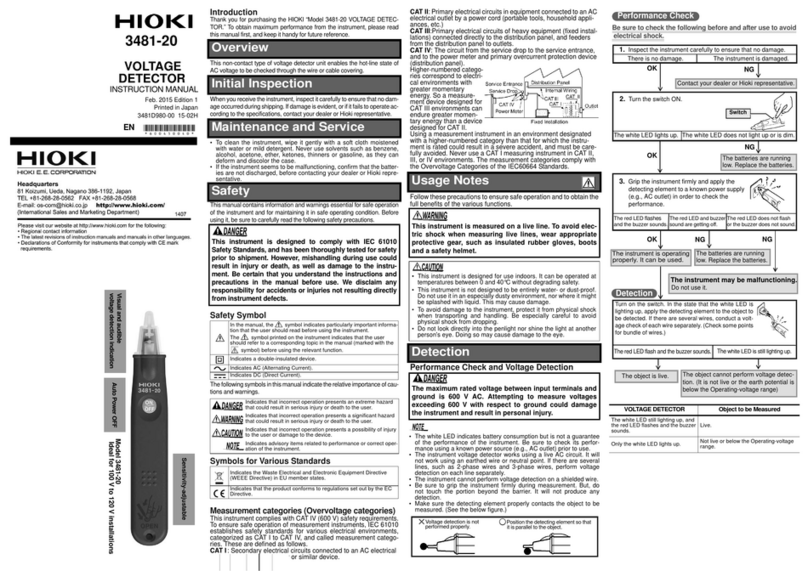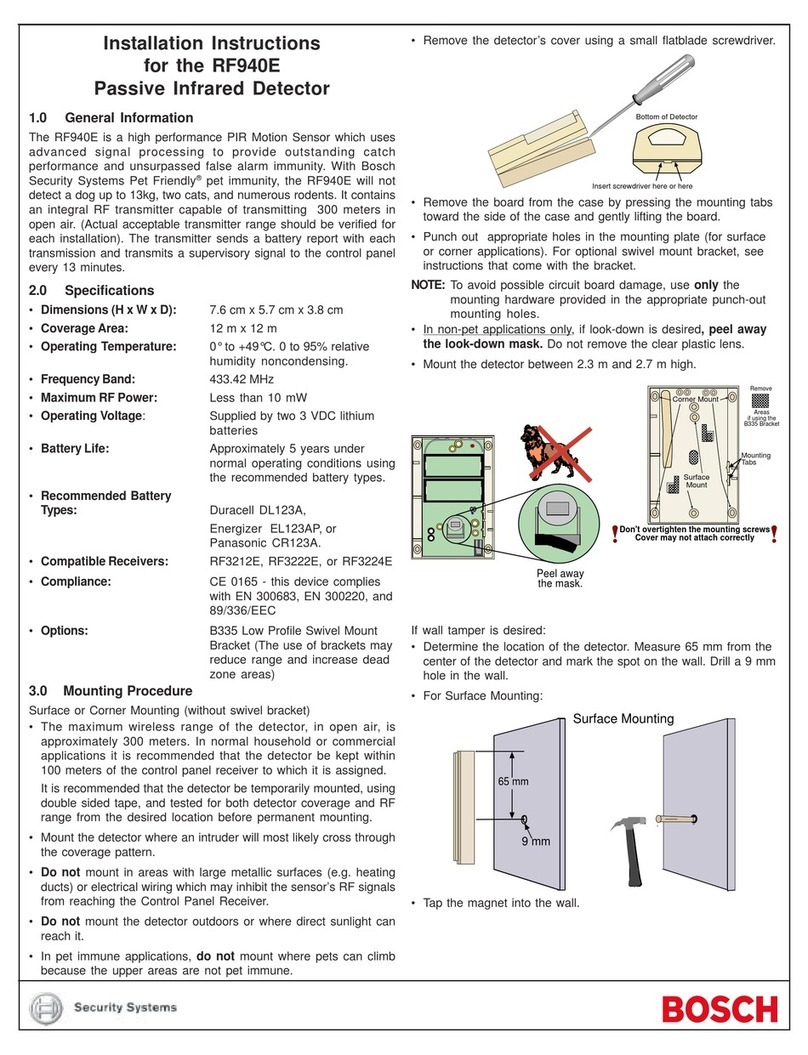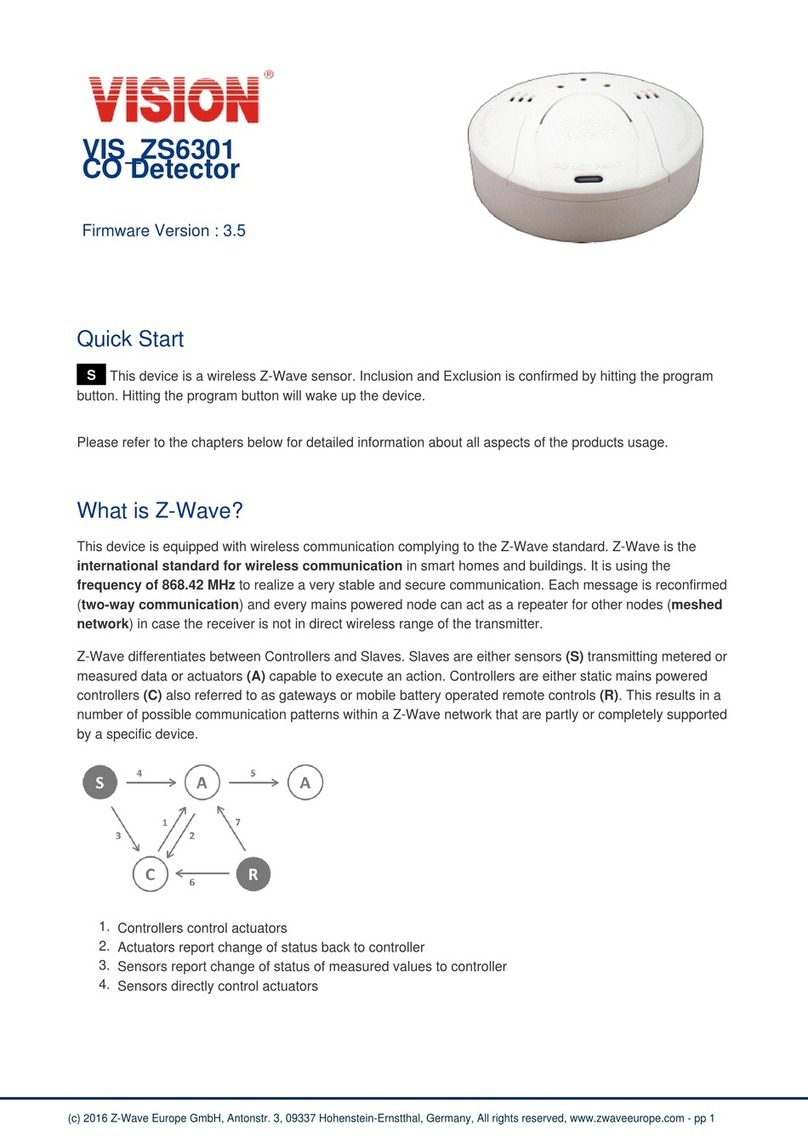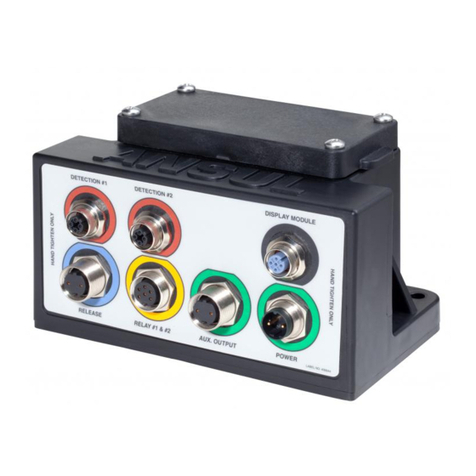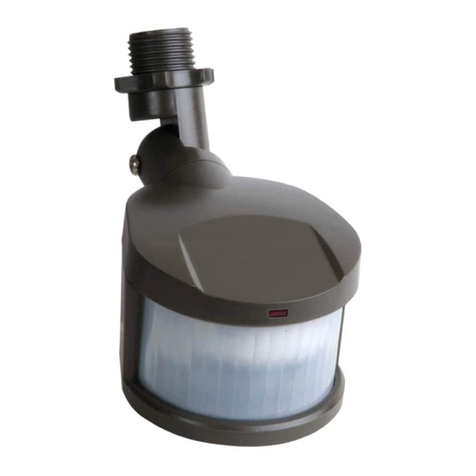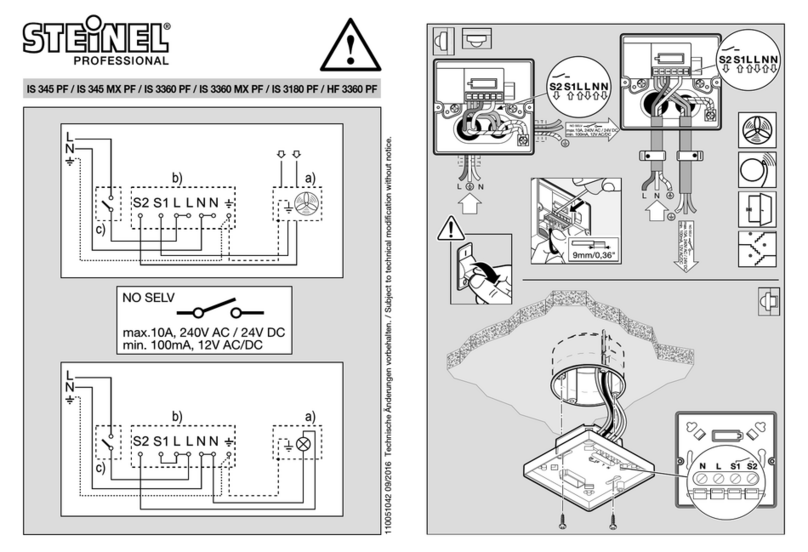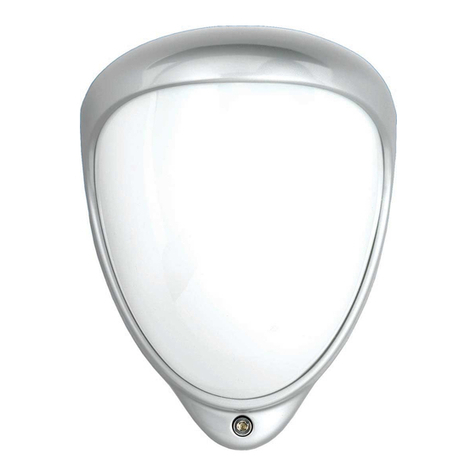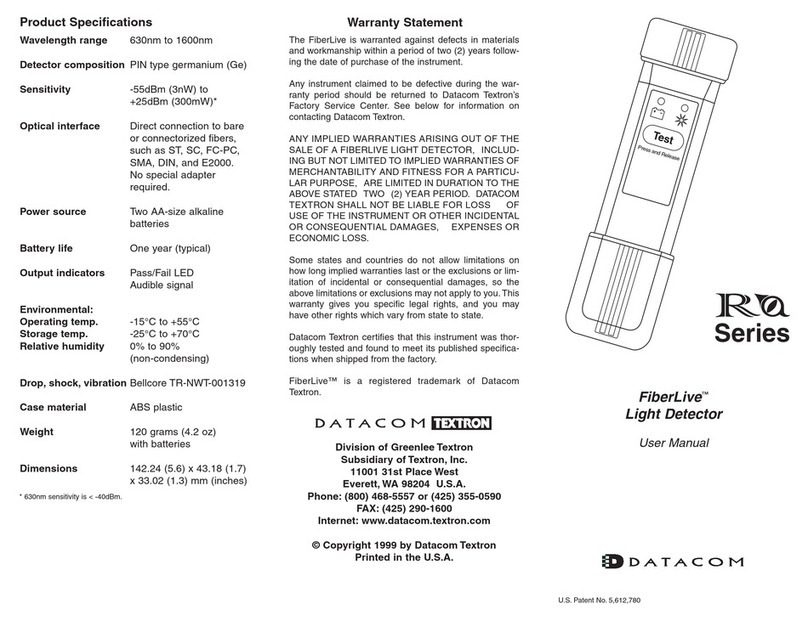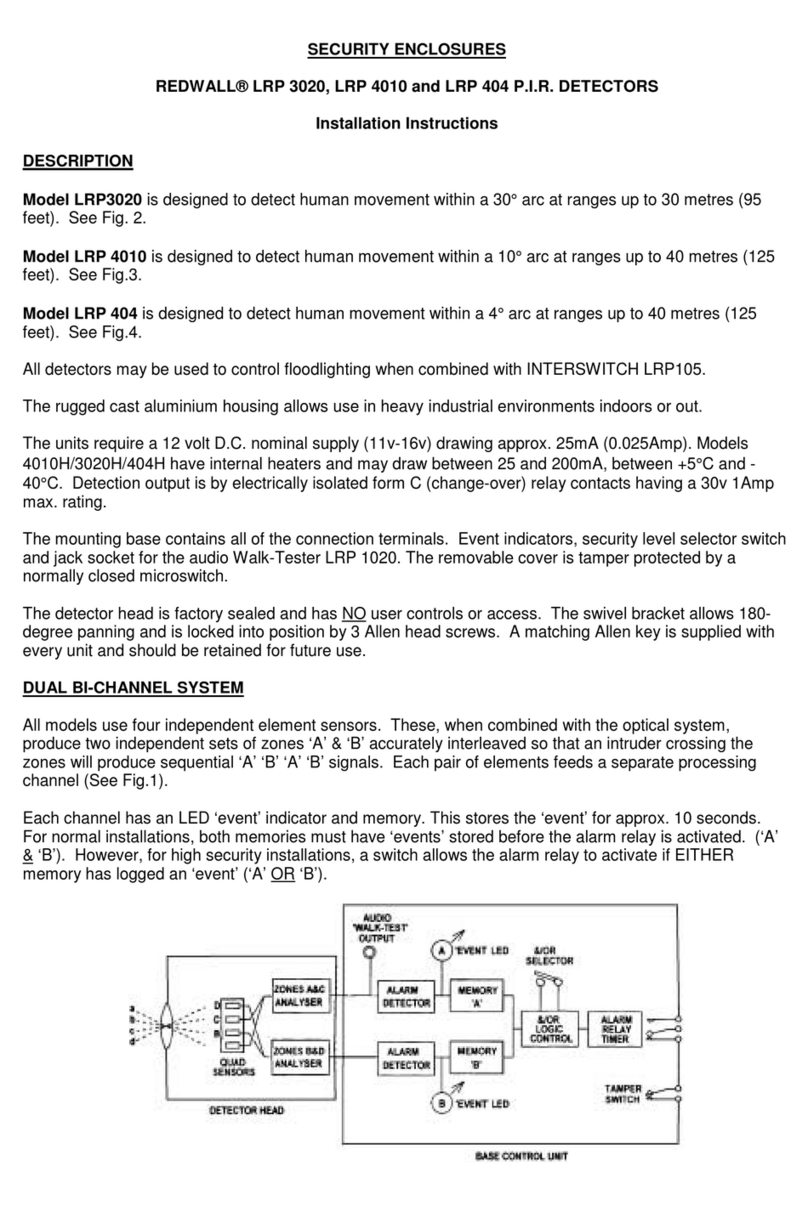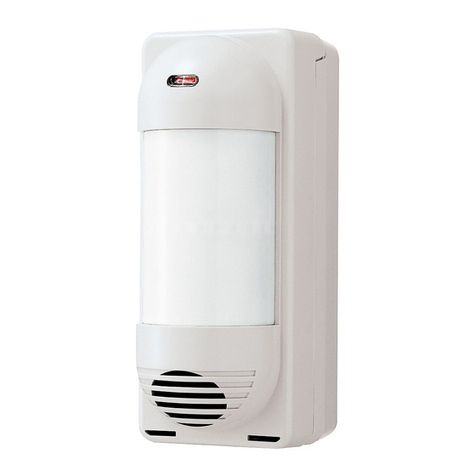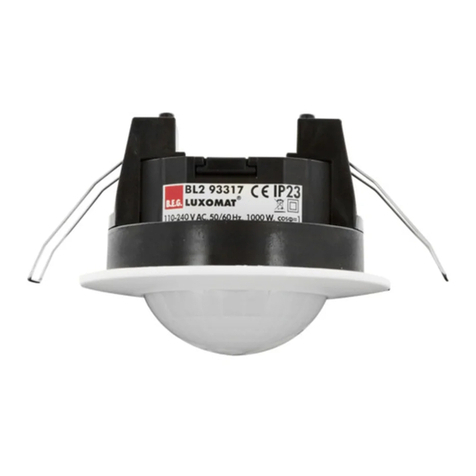
Tel: (909) 890-0700 Fax: (909) 890-0736
P. O. BOX1667 SAN BERNARDINO,CA 92402
Web: www.tinker-rasor.com E-mail: Info@tinker-rasor.com
- 2 -
Sponsoring members of NACE International, NACE Foundation
If you have a pacemaker, life critical electronic medical devices or any medical condition effected
by High Voltage, DO NOT use this type of equipment. Only trained and responsible personnel
should operate high voltage equipment. Alert all personnel nearby prior to testing and display
warning signs. It is important to realize you are now using a high voltage, low energy holiday
detector. Tinker & Rasor holiday detectors, APS & AP/W, are designed to generate between 800
to 35,000 volts, pulsating DC. While these voltages are high, the energy emitted is well within
US, OSHA guidelines. https://www.osap.org/page/GuideOSHA
Rubber or plastic gloves and non-conductive footwear can minimize potential shock. Keep in
mind that the shock prevention effectiveness of the rubber or plastic glove and footwear is
limited to the condition of their protective surface. Make sure your gloves and footwear are in
good condition and have no holes or tears. Most Portable Holiday Detectors are limited to finding
defects in nonconductive coating materials. Testing should ONLY be conducted clear of personnel
not involved in the testing procedure. Personnel operating Holiday Detectors should always be
aware of their environment and the safety limitations imposed by same. Operator should have an
alert assistant, to ensure that all unauthorized personnel are kept clear of the testing area.
DANGER!!! Portable Holiday Detectors create an arc or spark. Use of a Portable Holiday Detector
in or around combustible or flammable environments can result in an explosion. When operating
in any potentially hazardous area, consult with the plant or site safety officer before proceeding
with a holiday detection test in any potentially hazardous or suspect area.
CAUTION! DO NOT USE AROUND SENSITIVE ELECTRONICS OR RADIO EQUIPMENT.
When “on” but not in use, Tinker & Rasor Pulse Type Holiday Detectors, APW and APS will
generate radio frequency emissions which are within the limit defined by the Electromagnetic
Compatibility Directive. Due to its method of operation however, the APW and APS Pulse Type
Holiday Detector will generate broadband RF emissions when the unit is generating high voltage
or when a spark is produced at the electrode. It is therefore recommended that the user does
not activate the high voltage within the vicinity of sensitive electronics or radio equipment.
DO NOT SHORTEN THE GROUND CABLE. NEVER TOUCH THE BARE GROUND WIRE
WHEN THE DETECTOR IS TURNED ON.
WARNING! USE CAUTION WHEN RAINING. If it is raining then there is a safety concern for the
operator. Surface water on the sub straight is usually not conductive enough to transmit voltage,
but almost any contaminant will cause water to become more conductive. If water covers the
wand handle while connected to the APW Power-Pak or the APS Instrument, then the operator
could become the return path for the high voltage. While the output voltage will cause harm to a
healthy person, according to OSHA, your environment must be taken into consideration when
operating this type of equipment. For example; if you are standing on top of a flag pole and
receive a jolt of high voltage, it will most likely cause you to jump, and you will fall off the flag
pole.
Stay Alert, Stay Aware and Stay Alive
.
If it isn’t raining, but the coating surface is wet, Tinker & Rasor Holiday Detectors are designed to
minimize the effects of damp or wet coatings. In extreme cases, “ghost” holidays might be
witnessed, should a continual path of water reach a holiday. If this continues, dry the sub
straight and continue testing.
It is important to note that all accidents are preventable. Take caution when using
Tinker & Rasor holiday detectors or any other high voltage test equipment.
3. CHECK-OUT INSTRUCTIONS





